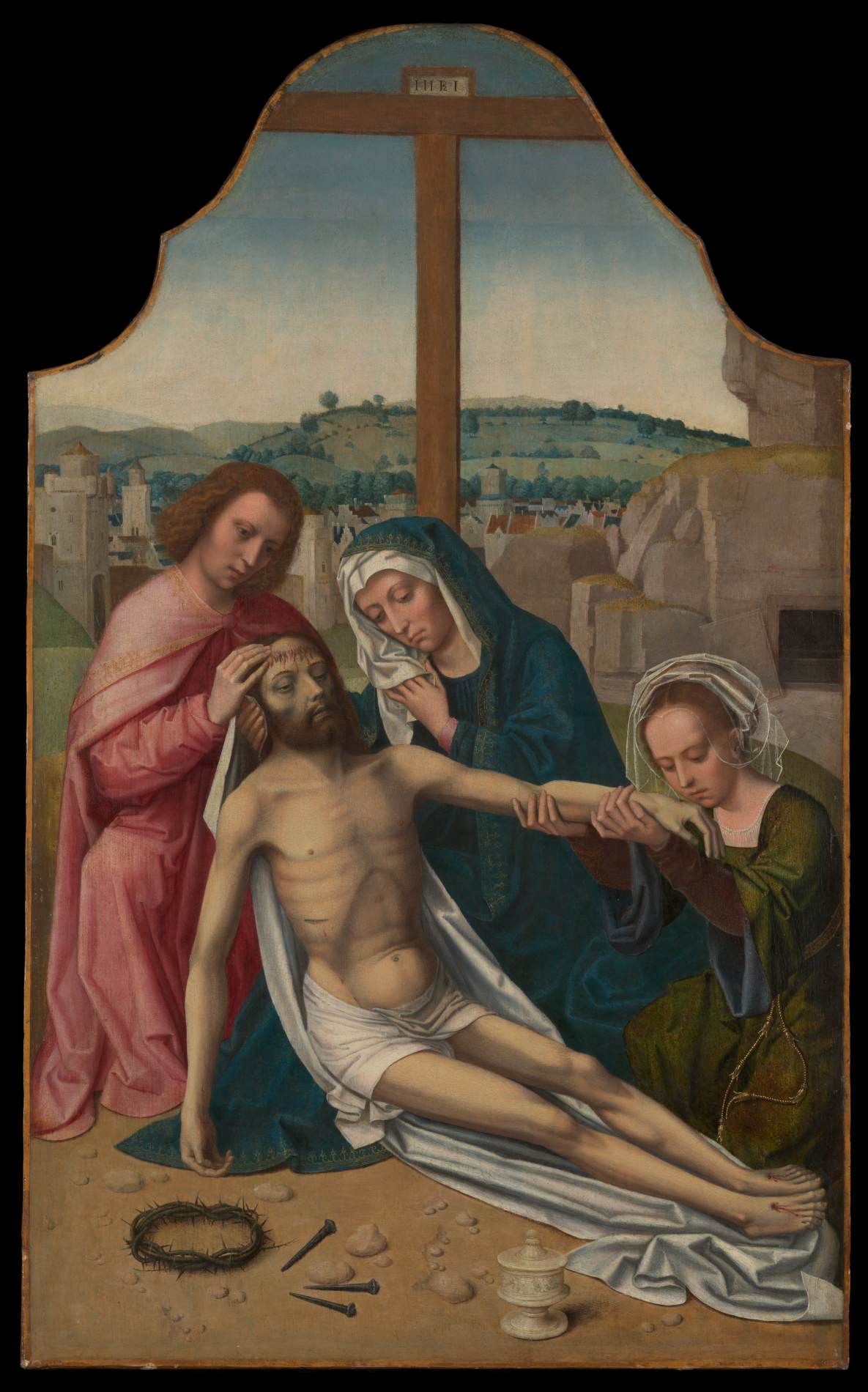Description
The Lamentation is a masterpiece by the Flemish artist Ambrosius Benson, noted for its artistic style and carefully crafted composition. The painting depicts the moment when Jesus is taken down from the cross and mourned by his followers, including his mother Mary and Mary Magdalene.
Benson's artistic style is characterized by his detailed realism and his ability to capture human emotion in his works. In The Lamentation, one can appreciate his painstaking painting technique and the way he uses light and shadow to create depth and realism in the figures.
The composition of the painting is also impressive, with the figures arranged in a triangular pattern that guides the viewer's gaze towards the center of the scene. The position of the characters and their facial expression convey the sadness and pain they feel for the death of Jesus.
Color also plays an important role in the work, with Benson using dark, earthy tones to create a somber and melancholic atmosphere. However, there are also touches of bright colour, such as Mary Magdalene's red dress, which add an interesting contrast to the painting.
The story behind the painting is also fascinating. The Lamentation was created in the 16th century during the time of the Protestant Reformation, when the Catholic Church was in crisis. The work reflects the religious devotion and the importance given to the figure of Jesus at the time.
As for little-known aspects, it is believed that Benson may have been influenced by the Italian art of the time, since his style resembles that of artists such as Raphael and Titian. The painting is also known to have been acquired by the Spanish royal family in the 17th century and has been exhibited in several major museums around the world.
In short, The Lamentation is a stunning painting that combines Benson's technical skill with human emotion and religious devotion. Its artistic style, composition and use of color make this work one of the most outstanding of the Flemish Renaissance.

